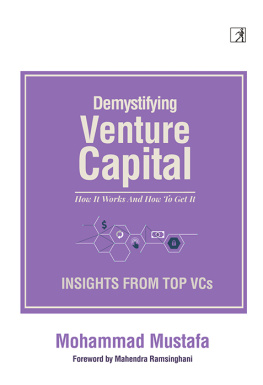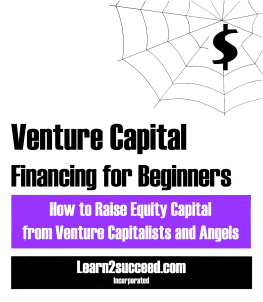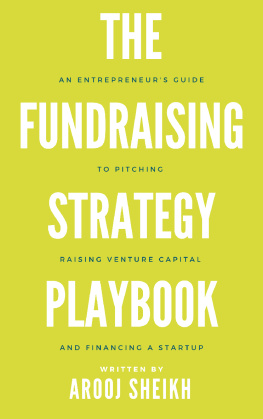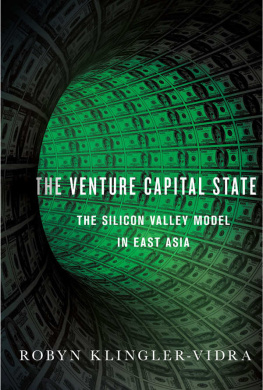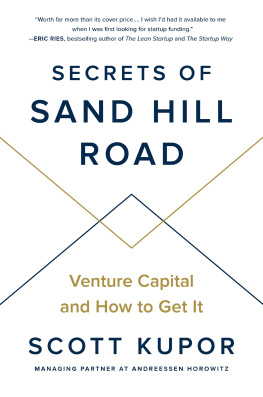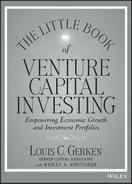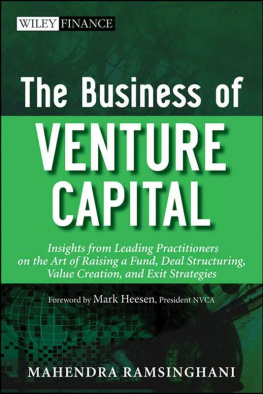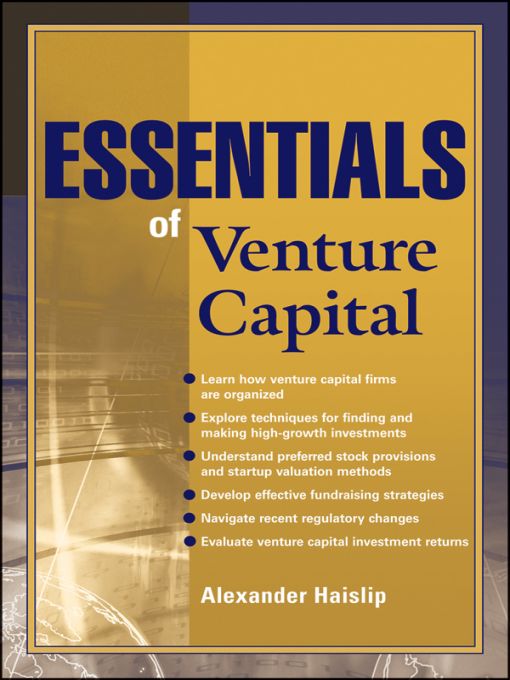Table of Contents
ESSENTIALS SERIES
The Essentials Series was created for busy business advisory and corporate professionals. The books in this series were designed so that these busy professionals can quickly acquire knowledge and skills in core business areas.
Each book provides need-to-have fundamentals for professionals who must:
Get up to speed quickly, because they have been promoted to a new position or have broadened their responsibility scope
Manage a new functional area
Brush up on new developments in their area of responsibility
Add more value to their company or clients
Other books in this series include:
Essentials of Accounts Payable, Mary S. Schaeffer
Essentials of Balanced Scorecard, Mohan Nair
Essentials of Business Ethics, Denis Collins
Essentials of Business Process Outsourcing, Thomas N. Duening and Rick L. Click
Essentials of Capacity Management, Reginald Tomas Yu-Lee
Essentials of Cash Flow, H. A. Schaeffer, Jr.
Essentials of Corporate and Capital Formation, David H. Fater
Essentials of Corporate Fraud, Tracy L. Coenen
Essentials of Corporate Governance, Sanjay Anand
Essentials of Corporate Performance Measurement, George T. Friedlob, Lydia L. F. Schleifer, and Franklin J. Plewa, Jr.
Essentials of Cost Management, Joe and Catherine Stenzel
Essentials of Credit, Collections, and Accounts Receivable, Mary S. Schaeffer
Essentials of CRM: A Guide to Customer Relationship Management, Bryan Bergeron
Essentials of Enterprise Compliance, Susan D. Conway and Mara E. Conway
Essentials of Financial Analysis, George T. Friedlob and Lydia L. F. Schleifer
Essentials of Financial Risk Management, Karen A. Horcher
Essentials of Foreign Exchange Trading, James Chen
Essentials of Knowledge Management, Bryan Bergeron
Essentials of Licensing Intellectual Property, Paul J. Lerner and Alexander I. Poltorak
Essentials of Managing Corporate Cash, Michele Allman-Ward and James Sagner
Essentials of Managing Treasury, Karen A. Horcher
Essentials of Patents, Andy Gibbs and Bob DeMatteis
Essentials of Payroll Management and Accounting, Steven M. Bragg
Essentials of Sarbanes-Oxley, Sanjay Anand
Essentials of Shared Services, Bryan Bergeron
Essentials of Supply Chain Management, Michael Hugos
Essentials of TechnicalAnalysis forFinancial Markets, James Chen
Essentials of Trademarks and Unfair Competition, Dana Shilling
Essentials of XBRL, Bryan Bergeron
For more information on any of the above titles, please visit www.wiley.com.
Preface
I left New Jersey in June of 2004 and drove my white Toyota across America on Interstate 80. After five days on the road, I pulled into the parking lot of a Residence Inn in Mountain View, California. It was the middle of the night.
Mountain View is in the heart of Silicon Valley, north of San Jose and south of San Francisco, and just a town over from Stanford University. It is a city of mixed residential buildings, low-slung apartment complexes, quarter-acre lots, and 1970s-style office parks. Tall redwood trees pop up between the buildings, punctuating an unremarkable skyline.
The city abuts Moffett Federal Airfield, which features the single most notable building in Mountain View, a 1930s dirigible hanger shaped like a gigantic caterpillar, three football fields long and 200 feet tall.
Giant gray C-130 Hercules turbo-prop planes buzz the town on Air National Guard training days, their massive bodies hanging fat and heavy against the blue sky.
Mountain View is a place practiced in the art of launching massive endeavors and has served as home to several large technology companies. Google was king while I was there and its employees seemed to have invaded the city. You couldnt walk down Castro Street, the citys main drag, without going past five or six people wearing T-shirts with the companys colorful logo.
They appeared so self-assured in the summer of 2004. Google was poised to go public and it was easy to imagine the employees smugly calculating the value of their stock options in their heads. The dot-com boom had come and gone, but the techies were going to cash in one more time. Google promised to be a phoenix flying out of the ashes of excess from four years before.
Every few years, there must be that spectacular reminder that the merry-go-round still offers riders the brass ring, writes Silicon Valley Journalist Michael Malone. After the dot-com bust, Googles initial public offering (IPO) was surely that: proof that entrepreneurs, engineers, and financiers could still launch lucrative new industries.
The process of going from idea to multibillion-dollar business fascinated me and I decided to learn as much about it as I possibly could. I spent my first year in Mountain View interviewing anybody who could teach me the business of technology.
One of the first lessons I learned was that there are two types of technology start-ups: those that had raised money from venture capitalists and those that were trying to raise money from venture capitalists.
Google raised over $25 million from Sequoia Capital and Kleiner Perkins Caufield & Byers, and was worth $27.2 billion the day it went public. Kleiner Perkinss John Doerr and Sequoias Michael Moritz had invested when Google was little more than two computer science dropouts in a garage. Five years later, it was an Internet juggernaut.
It snapped the Silicon Valley ecosystem into focus for me and helped me understand why venture capitalists were treated with such reverence. They were both technological clairvoyants and the gate-keepers to great wealth.
But the success of Google was a bright spot in an otherwise cloudy and confusing time for venture capital. The basics of the business were under constant question as investor performance waned.
What had once been a cottage industry of casual partnerships had been transformed by the dot-com boom but had yet to find a firm footing in its new role. Technology was no longer a part of the U.S. economy, it was the U.S. economy, and venture capital was one of its most important catalysts.
Venture capitalists raised over $100 billion in 2000, and the traditional models of investment were no more built for that kind of boom than a Volkswagen Beetle is built for the Indy 500. The industry was forced to evolve.
This book will help you understand how the venture capital industry is changing. It will show you the incentives that individual investors face and how those incentives dictate the evolution of the industry. If youre uncertain about how venture capital works, or want to understand recent developments in the business, this book is designed to quickly get you up to speed.
You can read the book straight through or pick out the chapters that interest you most.
Chapter 1 serves as an overview of both the basics of venture capital and the major changes and challenges the industry has faced during the past decade. This chapter will help you get up to speed on how venture investors operate and what makes them successful. You will learn how government regulation, industry consolidation, and new technologies have changed the finance of technology start-ups.


